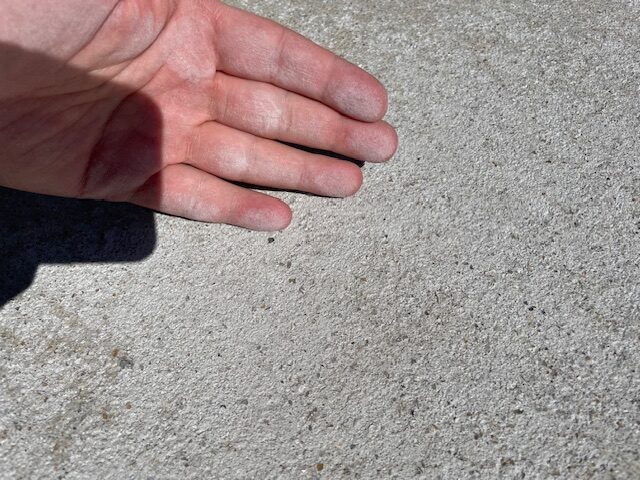As homeowners, we often take pride in maintaining our properties, ensuring that every nook and cranny is in top condition. However, sometimes, despite our best efforts, we may notice peculiar occurrences like concrete chalking. If you’ve ever observed powdery residue on your concrete surfaces while sweeping or using a yard blower, you’re not alone. Concrete chalking is a common issue that can affect the appearance and durability of concrete structures. In this article, we’ll delve into the causes of concrete chalking and provide some valuable tips on how to repair it.
What is Concrete Chalking?
Concrete chalking refers to the formation of a powdery substance on the surface of concrete. This powdery residue is typically composed of cement particles that have been weathered away from the surface due to various environmental factors. While concrete is known for its durability, exposure to sunlight, moisture, pollutants, and other elements can cause it to deteriorate over time, leading to chalking.

Causes of Concrete Chalking:
- UV Exposure: Ultraviolet (UV) radiation from sunlight can break down the surface of concrete over time, causing it to chalk.
- Moisture Penetration: Water infiltration into concrete can lead to a phenomenon known as efflorescence, where soluble salts migrate to the surface and contribute to chalking.
- Chemical Exposure: Exposure to chemicals such as acids, salts, and pollutants can accelerate the deterioration of concrete surfaces, resulting in chalking.
- Poor Concrete Mix: Improperly mixed concrete or the use of low-quality materials during construction can make the concrete more susceptible to chalking.
Repairing Concrete Chalking:
- Pressure Washing: Start by thoroughly cleaning the chalked surface using a pressure washer. This will help remove loose particles and prepare the surface for further treatment.
- Chemical Treatment: Apply a concrete cleaner or etching solution to remove stubborn chalk residue and any underlying contaminants. Follow the manufacturer’s instructions carefully and ensure proper ventilation during application.
- Sealing: Once the surface is clean and dry, consider applying a high-quality concrete sealer to protect it from future chalking and other forms of deterioration. Choose a sealer specifically designed for outdoor use and follow the application instructions closely.
- Surface Repairs: For more severe cases of concrete chalking or damage, you may need to repair the surface using a concrete patching compound. Follow the manufacturer’s guidelines for mixing and applying the patch, and allow sufficient time for curing before sealing.
- Preventive Maintenance: To prevent future instances of concrete chalking, regularly inspect your concrete surfaces for signs of deterioration and take proactive measures such as applying sealant every few years and avoiding harsh chemicals or abrasive cleaning methods.
In conclusion, concrete chalking is a common issue that can affect the appearance and longevity of concrete surfaces. By understanding the causes of chalking and following these repair tips, homeowners can effectively address this issue and maintain their concrete structures for years to come. If you encounter severe or persistent chalking problems, consulting with a professional home inspector or contractor may be advisable to assess the situation and recommend appropriate solutions.
